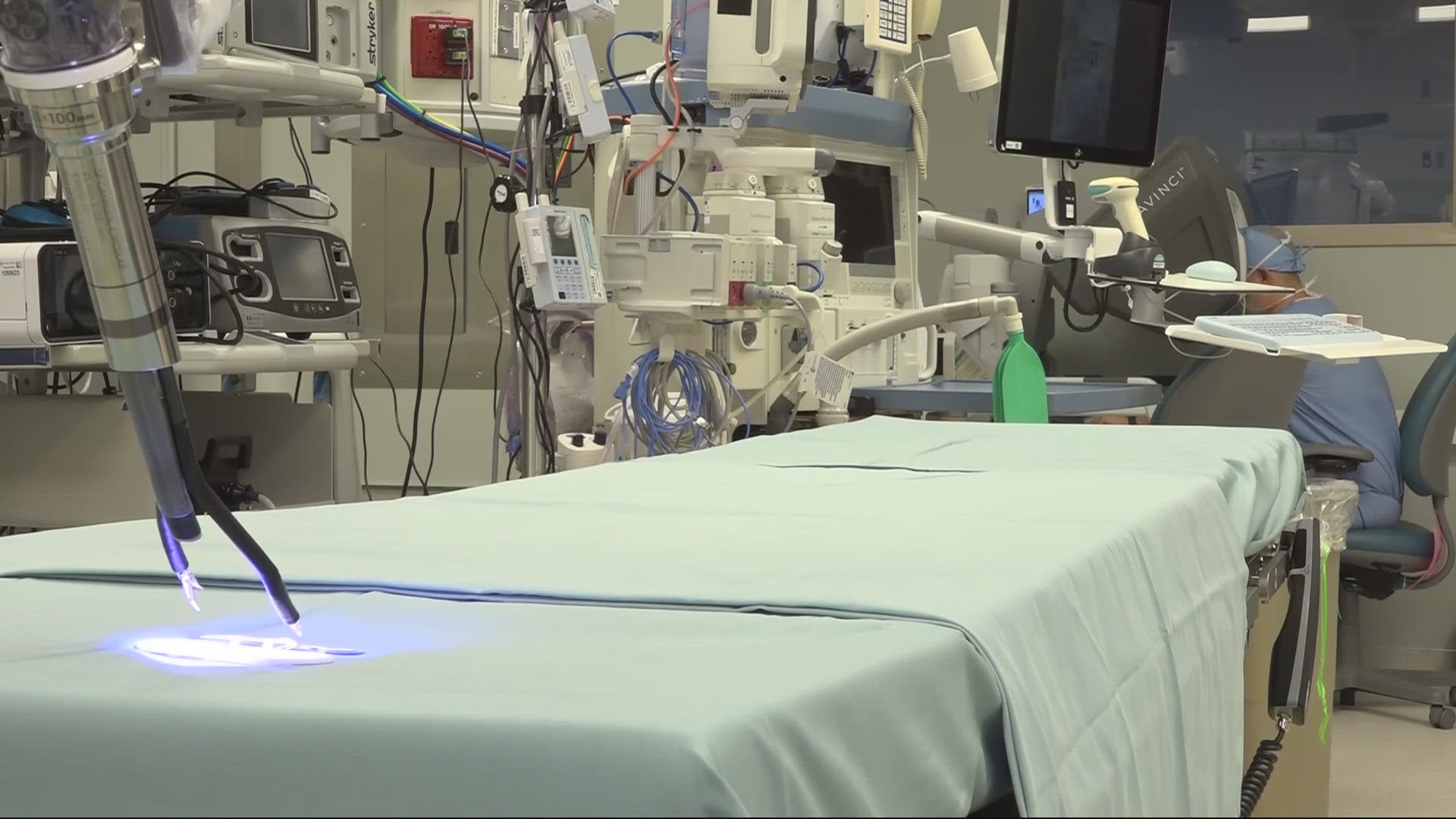JACKSONVILLE, Fla. — A robot working like a video game controller and a lab where a replica of your mouth can be printed are some of the technology Mayo Clinic is using to save lives in Jacksonville.
April is Head and Neck Cancer Awareness month. Each year tens of thousands of people are diagnosed with head and neck cancer in the U.S. and Mayo Clinic's Department of Otolaryngology Chair, Dr. Jeffrey Janus, says the number of tumors attributed to the human papilloma virus, or HPV, has "exploded."
Janus says his department's Da Vinci single port robot is one of the few in Florida. The robot's surgical instruments come out of one port and are controlled from the surgeon who is across the room, much like a video game controller is used.
"I move my hands to move the instruments around," Janus showed First Coast News inside the operating room. "You can tie knots with the needle."
Most cancerous tumors in the back of the throat are attributed to HPV, the most common sexually transmitted disease, reports the CDC.
"This [technology] is very important nowadays because there's been an explosion of these kinds of tumors," said Janus.
Janus says they're now seeing this cancer in people who are younger, in their 40s to 60s. He says that means figuring out how to treat people less invasively, so there won't be issues later on, such as an issue due to radiation.
"Being able to do this for patients is something that is completely changing the field," Janus said. "We used to have to do these big surgeries and the surgeries were morbid, meaning they had a lot of issues associated with them. But now we've made the surgeries less invasive and recovery times are shorter and outcomes are better."
Mayo Clinic is also using 3D printing to make surgeries faster, Janus says.
"Some cancers of the mouth and of the face can be very complex and involve the removal of bone and soft tissue," he explained. "So we now use this 3D modeling to not only model where the tumors are, but to model where we're going to remove bone and soft tissue."
With technology and steady hands working together, Janus says up to 95 percent of the head and neck cancer patients survive.
"We're leveraging this technology to do great things for our patients," he said "It's really special to be a part of."
Learn about reducing your risk for head and neck cancer and what symptoms to look for here.

